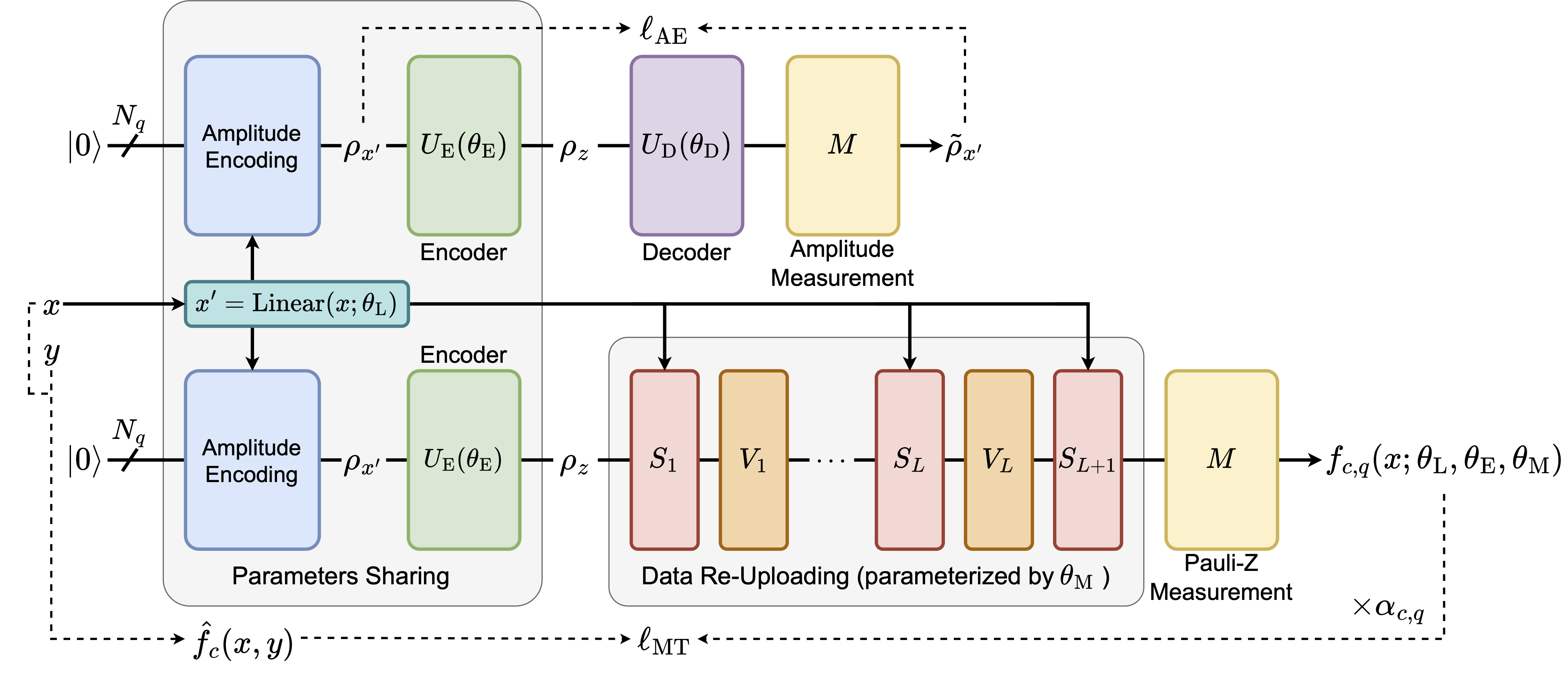
In this paper, we propose test-time training with the quantum auto-encoder (QTTT). QTTT adapts to data distribution shifts between training and testing data and quantum circuit error by minimizing the self-supervised loss of the quantum auto-encoder. Empirically, we show that QTTT is robust against data distribution shifts and effective in mitigating random unitary noise in the quantum circuits during the inference. Additionally, we establish the theoretical performance guarantee of the QTTT architecture. Our novel framework presents a significant advancement in developing quantum neural networks for future real-world applications and functions as a plug-and-play extension for quantum machine learning models.








@misc{jian2024qttt,
title={Test-Time Training with Quantum Auto-Encoder: From Distribution Shift to Noisy Quantum Circuits},
author={Damien Jian and Yu-Chao Huang and Hsi-Sheng Goan},
year={2024},
eprint={2411.06828},
archivePrefix={arXiv},
primaryClass={quant-ph},
url={https://arxiv.org/abs/2411.06828},
}